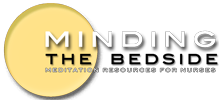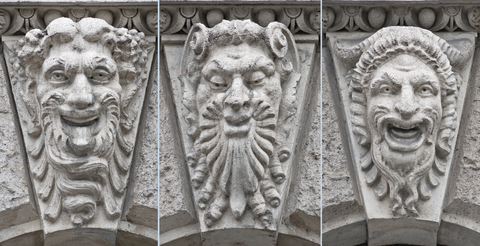Can Awareness and Meditation Practice Affect How We View Our World? A Series of Articles
Part Two – Anchoring the Awareness of Emotions in the Breath
When confronted with strong emotions or sensations, there are many options for awareness and what we can do and how we’ll deal with whatever arises.
Because strong emotions are so powerful in their ability to distract us from the present, plummeting us into a space of unconscious patterns, we need to have tools to bring our mind into a state of (relative) ease, where we won’t react to the circumstance, and then react to our reactions.
Without our even knowing it, our breathing changes in response to our emotional state. When we’re excited or scared, our breathing may increase or even race. When we’re depressed our breath might become shallow. And when we’re stressed, we may even hold our breath. All of these changes occur without our even knowing that they’re happening.
Many years ago, I had the harrowing experience while rock climbing of blacking out on a climb because of the severity of the climb and because, unbeknownst to me, I’d been hyperventilating. Without my even knowing it, and despite the negative effects that passing out on a rock climb could have had (I was fortunate enough to be on a rock ledge at the time), my breathing had changed. The very fear of falling that led me to hyperventilate could have been the cause of my falling!
Bringing our attention to the present and to our awareness and breath is an immediate way of anchoring our attention and preventing whatever is arising from running away with our mind.
Before we go any further, it’s important for us to remember that even with practice in awareness, strong emotions may rip us from our anchor, setting us adrift in a sea of fantasy or fear. So, it’s vital not to beat up on ourselves when our methods don’t immediately free us from our emotional storms. As I shared in yesterday’s post, Part One – The Object of Our Emotion is Not its Cause, even though I practice these techniques in awareness, there are times when whatever arises knocks me from my equipoise and offers me the chance to practice working with my mind.
I’ve written about using awareness and the breath and using the breath to work with thoughts in other posts:
MEDITATION: WHO IS THE MEDITATOR?
ARE THOUGHTS THE MIND, OR JUST A PRODUCT OF IT?
WATCHING THE CLOUDS WITHIN OUR MIND
and have provided some great scripts for practicing with using awareness and the breath:
Exercise # 1 Riding the Breath
Exercise # 2 Beginning to Work with Our Thoughts
Exercise # 3 Continuing to Work with Our Thoughts
Please use these awareness tools and let me know if they work for you. If they do, that’s great – let me know. If they don’t work – PLEASE, let me know!
By coming back to awareness and the breath as an anchor during times of emotional of mental turmoil, we can gradually train ourselves to get less caught-up in our habit of following our thoughts and emotions, and learn to find awareness and a less reactive state of mind from which to engage with whatever is going on.
How can I do this? What do I need to do to practice awareness and free myself from the grasp of these difficult emotions and thoughts? Practice. How do I do that? Use the scripts that are provided as a start. You can also download the free ebook, Can Meditation Change How We View the World?, that brings it all together to help you stay consistent in your practice.




[…] this series, we’ve covered using the breath as an anchor for our attention and meditation practice. We’ve also discussed how to get some […]
[…] in this series of posts, we’ve touched on how to use our breath as an anchor when an emotion or thought to arise within our mind, for example a desire for something or an angry […]
[…] begin to work with our thoughts by using our breath as the anchor of our attention. We observe our breath because it is always there, because we can do […]
[…] You can find a post, references to other posts, and downloadable exercises for this practice here: Anchoring the Awareness of Emotions in the Breath. Whatever you do, make sure that give yourself plenty of time to work with, in this case, the breath […]
[…] We practice remembering the moment by learning to use an object of focus, perhaps our breath, and anchoring our attention on that […]
[…] For the sake of ease, I decided to share the ten things that I remember when I become distracted by the many things that my mind seems to follow. I hope that this list helps you. In the list, when I use the phrase, “…return your attention to the object of your meditation…,” I’m referring to the practice of using the breath or some “thing” as an anchor for your attention. For more information on using the breath as an anchor for meditation, please refer to this post. […]
[…] written about working with whatever arises, and using the breath as an anchor for attention. I’ve also written about using the things that scare you or that you fear as a […]
[…] maybe you’re one of them. “Doing something” special isn’t the case. All you need is your breath, and a few minutes of time set aside to begin your […]
[…] lost – at least – two days of good practice time. Instead, I can work on just watching whatever arises while sitting with my breathing. Not getting lost in distraction, just being here now, sick or […]
[…] previous posts we’ve discussed how to work with the breath as an anchor for taming the mind, bringing our attention into the present, and maintaining an […]
[…] maybe you’re one of them. “Doing something” special isn’t the case. All you need is your breath, and a few minutes of time set aside to begin your […]
[…] set aside some time to meditate. Begin working with your breath (please see the links below and other materials that are provided for learning how to work with the breath). Once you’re stable in being able […]
[…] we’ve anchored our attention in the breath, we begin with one of our senses. Let’s start with hearing. As you sit, just listen to all of […]